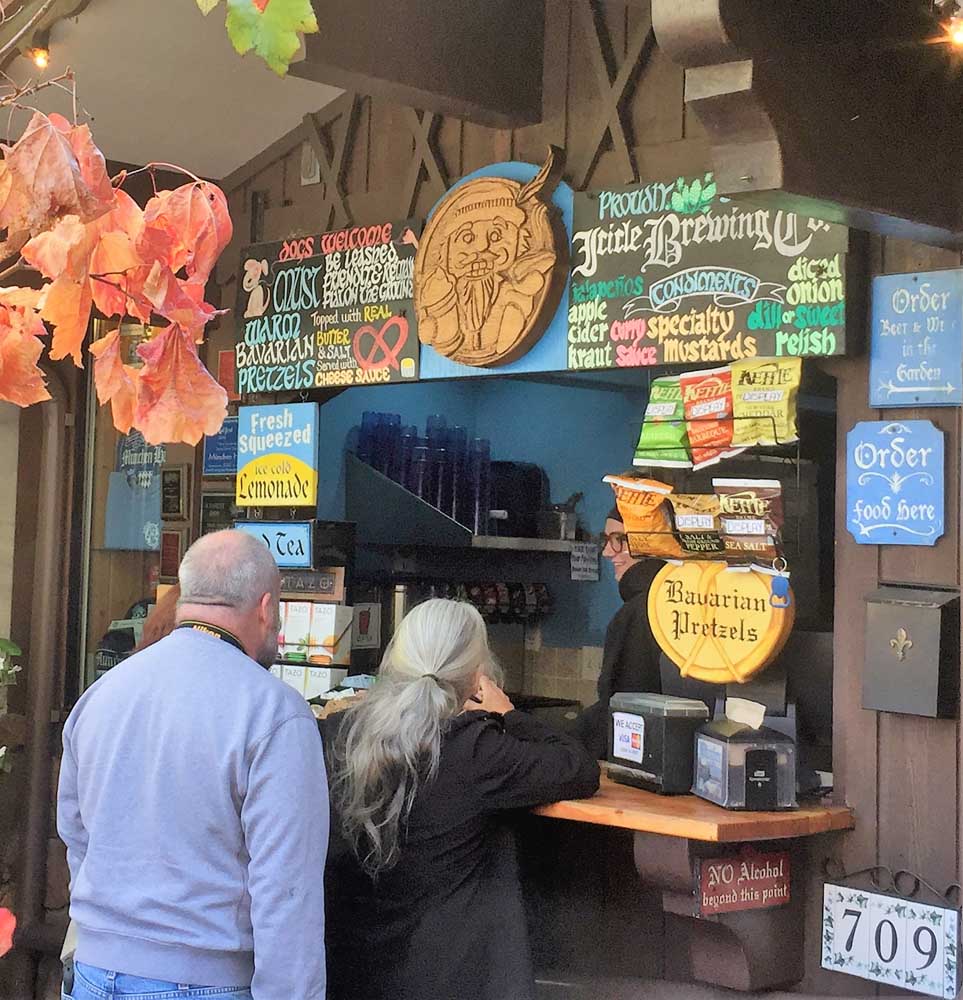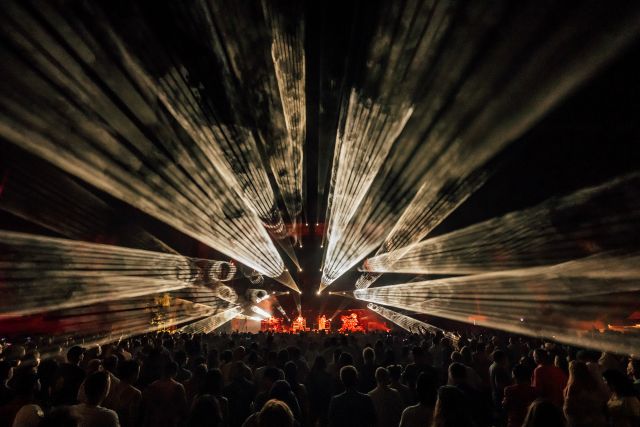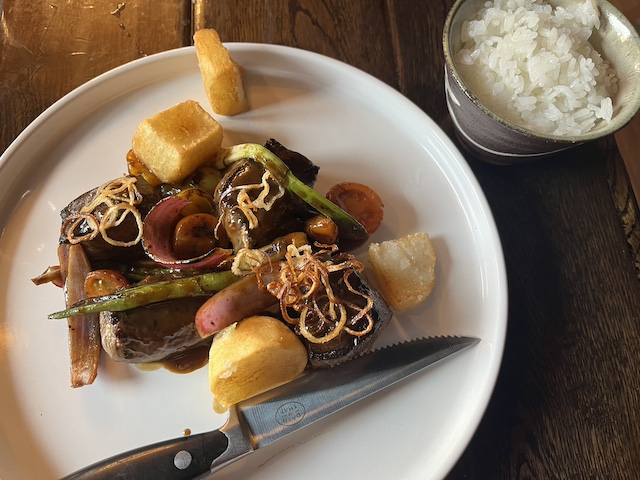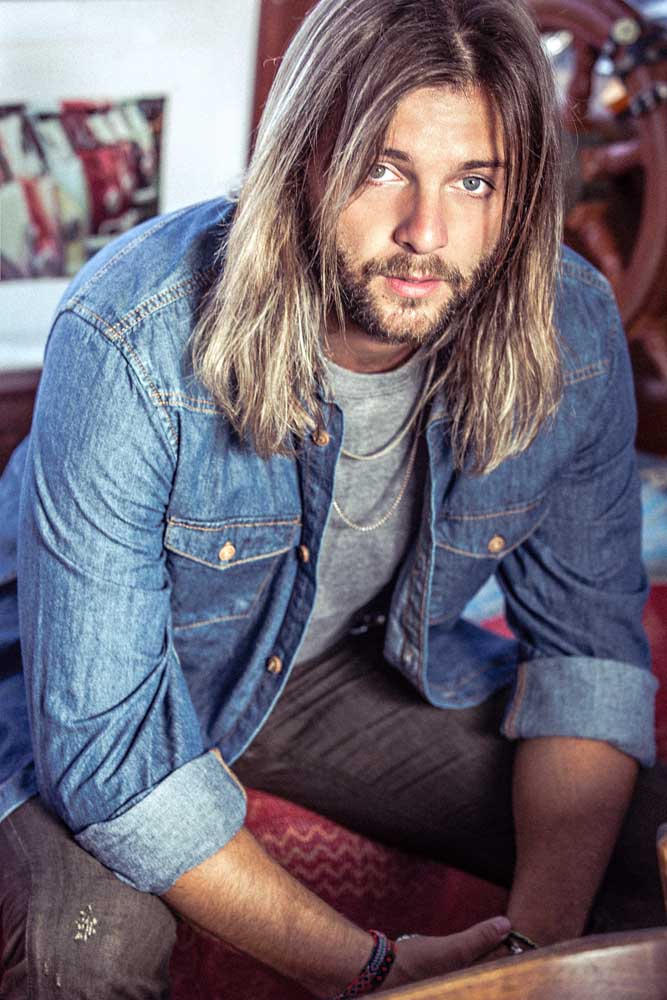Leavenworth, Washington: Bavaria in the Cascades
Published 12:00 am Sunday, October 23, 2016

- John Gottberg Anderson / For The BulletinA couple place an order for bratwurst, pretzels and Icicle Beer at the München Haus, a Bavarian grill and beer garden on Front Street. A variety of restaurants serve such European plates as schnitzel, sauerbraten, rouladen and goulash with cabbage and potato salad.
LEAVENWORTH, Wash. —
If you think this north Cascades village is all about jägerschnitzel, nüssknacker and lederhosen, it’s time to take another look.
No doubt, you won’t have to look far to find the schnitzel — a breaded pork cutlet in mushroom sauce — in Leavenworth’s myriad German-style restaurants. Head in any direction from the Nutcracker (nüssknacker) Museum, and bonus points if you’re dressed in the lederhosen (leather breeches) you’ll see in shop windows.
But Leavenworth has only been “Bavarian” since the 1960s, about 10 years before Sisters injected its Old West theme into Central Oregon. For travelers willing to look a little, who stray from U.S. Highway 2 into the valley of Icicle Creek or up the Chumstick Highway toward Lake Wenatchee, there’s plenty more to see and experience.
Settled in 1889 by Captain Charles Leavenworth and other pioneers searching for gold, furs and farmland, the town grew around the railroad as a logging center. When the Great Northern Railroad withdrew to Wenatchee, 25 miles southeast, in the 1920s, commerce stagnated. It remained in economic doldrums through the Great Depression and WWII, drawing scores of outdoors lovers to the rugged mountains at the foot of Stevens Pass, but few others.
In 1962, in partnership with the University of Washington and a pair of Seattle investors, community leaders began exploring ways to revitalize the town. After a 1965 visit to the Danish-styled town of Solvang in Southern California, they determined that Leavenworth’s spectacular alpine setting, not unlike that of Europe’s Alps, could be a perfect backdrop to attract tourism.
One by one, Leavenworth buildings were remodeled to emulate a Bavarian village, until the entire downtown area of about 20 square blocks began to look like Garmisch-Partenkirchen.
A series of annual festivals, including Maifest, Oktoberfest and a Christmas lighting ceremony, provided incentives for visits, which at first came primarily from the Puget Sound area.
Today, half a century after the reinvention of Leavenworth, annual tourism has grown to exceed 2 million visitors from all over the world. That’s a staggering number for a town with a permanent population of only about 2,000.
Ski heritage
Back in the 1930s — before Timberline Lodge, before Sun Valley — Leavenworth was better known as a ski destination. Through the 1970s, in fact, it was the finest ski-jumping mountain in the western United States. The 90-meter Bakke Hill jump hosted five American championships between 1941 and 1978 and produced numerous Winter Olympians until it was eclipsed in the late 1970s by newer, larger ski jumps in Colorado and Michigan.
The Leavenworth Winter Sports Club, founded in 1928, still operates Ski Leavenworth, with two much-smaller (26-meter and 15-meter) ski jumps and a nordic jump school. Its two groomed hills are served by rope tows at the end of Ski Hill Road, a mile and a half north of Highway 2. The club maintains 26 kilometers of groomed cross-country trails at four area locations, with five of 7 kilometers at the Ski Hill lit for night skiing and tubing.
The Leavenworth Ski Hill Heritage Foundation is actively restoring the original 1936 lodge at the foot of the hill and developing an ice rink that will double in summer as a pavilion for farmers markets. It’s also raising money for a Pacific Northwest Ski Museum.
Sport shops in Leavenworth have inexpensive equipment rentals and sell lift and shuttle tickets for Stevens Pass, a substantially larger resort (10 lifts and a 2,000-foot vertical) located 33 miles northwest via U.S. Highway 2.
There’s no skiing between April and November, but the Cascades’ eastern slope between Stevens and Leavenworth may be even more attractive to travelers during those months.
As U.S. Highway 2 descends 3,000 feet from the 4,061-foot pass to the Bavarian village, it follows Nasan Creek to the Wenatchee River, which separates the remote climes of the Alpine Lakes Wilderness from the campgrounds of Lake Wenatchee State Park.
In autumn, this is an especially memorable drive. The leaves of cottonwoods and aspens, lining large sections of highway, are ablaze in reds, yellows and oranges. Passing between Lichtenberg and Snowgrass mountains, these brilliant hues are accented by various evergreens — firs, pines, spruces — making the colors even more distinctive.
Around the shores of 5-mile-long Lake Wenatchee, camping and boating are popular recreations in summer, along with cross-country skiing in winter. The deep glacial lake sits near the farming hamlet of Plain at the head of a broad valley that surrounds the confluence of Chiwawa River with the Wenatchee, a Columbia River tributary.
The drive here from Leavenworth is beautiful any time of year, but no less so than a cruise out Icicle Road from the west end of the town. Following rocky Icicle Creek into the 414,000-acre Alpine Lakes Wilderness, the road is paved for 10 miles and gravel-topped for another 6½ before coming to an end at the Blackpine campground.
The 4-mile Icicle Gorge Loop Trail, near the far end of the canyon, is a good introduction to hundreds of miles of trails that extend through the wilderness. A strenuous ascent into The Enchantments, climbing more than 6,000 feet into the dramatic highlands and glacial tarns that lie behind stark Prusik Peak, has become so popular that the Forest Service now issues backcountry permits to hikers.
Sleeping Lady
Leavenworth’s best place to stay is also located off Icicle Road. The Sleeping Lady Mountain Resort is a remarkable retreat, built as Camp Icicle by the Civilian Conservation Corps. Between 1934 and 1942, it was home to 200 young men who built 20 bridges and two dozen buildings through this area of Washington, including the Leavenworth ski lodge and the original lodge at Stevens Pass.
After WWII, the cabins were redeveloped into the Icicle River Ranch, a family-oriented dude ranch that offered organized pack trips into the high country. It was sold in 1957 to the Yakima Diocese of the Roman Catholic Church, which operated it first as a youth camp, then as a conference center, for the next 34 years.
In 1991, the 67-acre property was sold to Harriet Bullitt, a Seattle broadcast executive, conservationist and patron of the arts. Bullitt renamed the retreat Sleeping Lady, after a mountain profile that overlooks the valley, and hired a team of architects to resurrect the camp. Eighteen original Civilian Conservation Corps buildings were fully remodeled and another 26 constructed in 1930s style.
When the Sleeping Lady resort opened to the public in 1995, it did so with a chamber-music festival at the Icicle Creek Music Center. Since expanded as the Icicle Creek Center for the Arts, it now has a 240-seat theater, an outdoor amphitheater and a recital hall while hosting a year-round calendar of concerts, theater, film and much more.
The arts expanded into the central resort area in the winter of 1996 when renowned glass sculptor Dale Chihuly visited Sleeping Lady and made the “Icicle Creek Chandelier” his first permanent outdoor installation. Standing nearly 9 feet tall and composed of 1,060 separate, iciclelike spikes, it stands today beneath the knoll-top home where Bullitt, now 92, still lives. Nearby are numerous other outdoor sculptures, including a series of colorful fiberglass salmon that represent habitat-restoration efforts of the past two decades.
Resort accommodation includes a pair of stand-alone cabins as well as alcove and loft lodging in six clusters, with some rooms designated for “canine companions.” The units have no televisions, but cellphone and Wi-Fi service is reliable. A seasonal swimming pool and hot tub, a play barn (with billiards and table games) and a fitness room are among the family-friendly amenities.
European-plan packages that include gourmet buffet dinners in the Kingfisher Restaurant (with produce from the resort’s organic garden) make the resort popular for corporate and academic retreats, as well as wedding and yoga groups. Visitors can also get pizzas and cocktails at the Grotto Bar, or lunches and espresso drinks at O’Grady’s Pantry, beside the resort’s gift shop and the Aspen Leaf Day Spa.
Wine and nuts
Unbeknownst to many, in addition to its other charms, Leavenworth is an emerging wine region. Thirteen different wineries have tasting rooms on Front Street in the heart of town, and many of them, including Boudreaux Cellars and the Eagle Creek and Icicle Ridge wineries, produce their wines locally. There are also two breweries — Icicle Brewing, on Front Street, and the new Blewett Brewing, one block back on Commercial Street — and a new craft distillery, Blue Spirits Distilling.
But there’s no doubt that downtown Leavenworth is all about emulating a small town in Germany’s Bavarian Alps. From City Park, with its band gazebo and traditional maypole, to Waterfront Park on the Wenatchee River, not a building undermines the architectural theme. That includes not only gift shops and restaurants, McDonald’s and Starbucks among them, but also banks and auto-parts stores. Even the regional hospital has a certain Tyrolean flair.
A fine place to begin an exploration of Leavenworth is the Edelweiss Building, built in 1897 at Front and Ninth streets. The first building to get a Bavarian makeover in the mid-1960s, it had been a bank, a bakery, a tavern and a hotel before a fire razed its second floor in 1962. That made it a natural choice for renovation.
Today, that second floor is the Leavenworth Nutcracker Museum. Open every afternoon from April through December, and weekends from January to March, it displays more than 6,000 nut-cracking devices, including a 2,000-year-old bronze tool traced to ancient Rome, and medieval iron and brass nutcrackers from France and England.
An introductory video notes that Tchaikovsky’s “The Nutcracker” ballet, first performed in 1892, helped popularize nutcrackers in the 20th century. While nutcrackers carved of boxwood were known in England as early as the 16th century, the art form wasn’t widely practiced in the Alps until much later.
By about 1800, however, German carvers were creating standing solders and kings. In 1830, a dictionary published by the Brothers Grimm included the term “nüssknacker,” defining it — according to museum literature — as “the form of a misshaped little man, in whose mouth the nut, by means of a lever or screw, is cracked open.” The first commercial production of nutcrackers began in 1872. Contemporary nutcrackers of all sizes and designs are now sold on the ground floor of the Edelweiss Building in the Nüssknacker Haus.
The town’s other museum, the Upper Valley Museum at Leavenworth, has a more traditional collection of Upper Wenatchee Valley history. It occupies a 1903 lumber company’s headquarters overlooking the Wenatchee River near Waterfront Park.
Setting a mood
For lovers of German food, Front Street is the place to go. My personal favorites are King Ludwig’s, with a moderately priced menu of schnitzels, sauerbraten, rouladen and goulash, accompanied by red cabbage and potato salad; and Andreas Keller, a basement spot with a similar menu and nightly musical performances by accordionist Thomas Tilton and other musicians. Just down the block, the München Haus is a Bavarian grill and beer garden with an outstanding choice of bratwurst, knackwurst and other sausages.
Although it was closed on the days of my last visit, the new Watershed restaurant has broken away from the Alpine mold and is drawing comparisons to Seattle fine dining. Hama Hama oysters, buffalo carpaccio, sake-and-ginger-broiled Alaska turbot and roasted eggplant ratatouille are just a few items featured on the menu.
One of my favorite features of little Leavenworth is the morning alphorn serenade at the Enzian Inn. Twice each day, at 8:15 and 9:15 a.m., owner Bob Johnson or his son, Rob — who together designed and built the inn — perch atop a fourth-floor balcony to serenade the hotel’s breakfast guests while awakening the village. Mellow, tenor-range tones flow from the long wooden alphorn, about 8 feet long and carved from a single piece of wood.
Of course, the Johnsons are clad in lederhosen. To dress otherwise would be downright irreverent.
— John Gottberg Anderson can be reached at janderson@bendbulletin.com.






